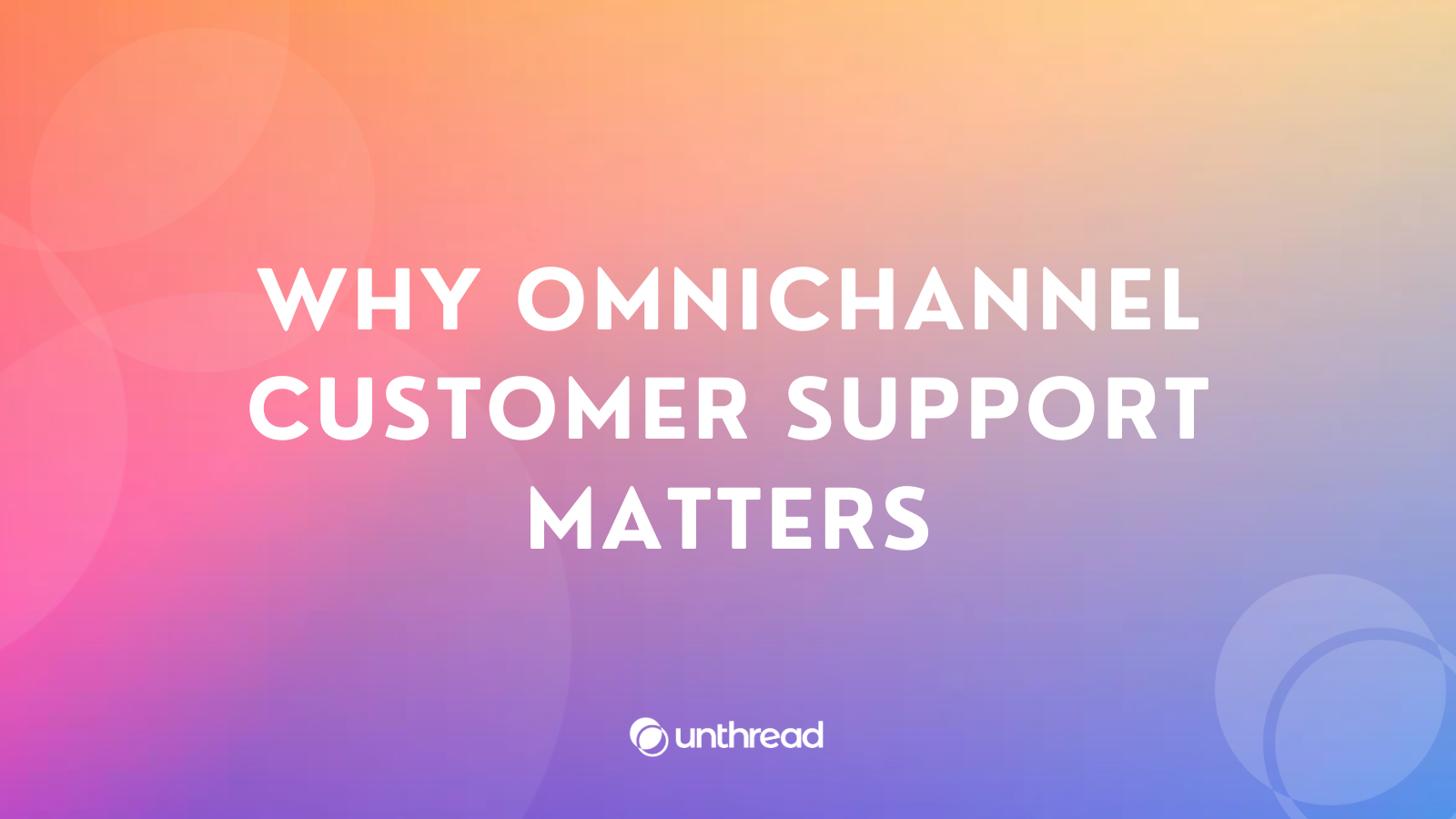Breaking Down Silos: Why Omnichannel Customer Support Matters

Communicating with your customers as a business has changed dramatically over the last few decades. What started with phone support has evolved to include email, live chat, WhatsApp, Slack, Discord, Telegram – and that's just scratching the surface.

What if there was a way to effectively reach customers on the channel that they prefer without inundating your team with too many tools? Today, we'll explore the exciting world of omnichannel customer support as a solution to this problem.
What is omnichannel customer support?
Omnichannel customer support is meeting your customers in the channels they prefer, switching from one channel to another with the customer support representative not losing the context and history of the exchange of messages. Different channels could include email, live chat, social media, which syncs into one customer support platform.
What is the difference between omnichannel vs. multichannel customer support?
Aren't these approaches the same? While both offer multiple channels for support, a key difference exists that significantly impacts the customer experience.
Multichannel customer support provides a variety of communication options, like email or phone. However, information from these interactions often remains isolated. For instance, a customer might submit an email request, then follow up by phone a few days later. This could lead to frustration as they repeat details to provide context. Additionally, agents struggle to see the complete picture, hindering swift resolution.
Omnichannel customer support elevates the experience. It seamlessly connects interactions across all channels. This ensures the agent assisting a customer via phone has access to the previous email, complete with all the provided details. With full context at their disposal, agents can deliver solutions faster and eliminate the need for repetitive explanations. This translates to a smoother and more satisfying experience for the customer.
The Challenges of Fragmented Support
Having no central platform means no central information. This will lead to the following:
For Customers:
- Frustration and wasted time: Repetition and redundancy in retelling the concern is frustrating for the customer especially when the issue needs to be resolved ASAP.
- Incomplete information: Some details will be left unsaid if repeated multiple times.
- Difficulty tracking progress: If the customer switches channels, it can be difficult to track the progress of the issue resolution
- Inconsistent experience: The quality of support can vary depending on the chosen channel, leading to customer dissatisfaction.
For Businesses:
- Inefficiency: Fragmented support can lead to redundant efforts by agents who lack complete customer history.
- Missed opportunities: Without a complete picture, it's harder to personalize the support experience or upsell additional products or services.
- Negative brand image: Inconsistent and frustrating support experiences can damage a company's reputation.
- Higher costs: Fragmented systems often require more resources and manpower to manage, leading to increased costs.
Examples of Fragmented Support:
- A customer calls about a billing issue but gets transferred to email for further investigation.
- A social media message receives a different response than an email for the same problem.
- A customer service representative lacks access to previous support interactions, forcing the customer to repeat information.
Building an Omnichannel Support Strategy
- Channel Selection: Identify the channels your target audience uses most (phone, live chat, social media) and ensure a presence on those platforms.
- Unified Platform: Invest in a central platform that integrates all your support channels. This allows agents to see a complete customer history, regardless of the channel used.
- Agent Training: Equip your agents with the skills to handle inquiries across all channels. This includes maintaining a consistent brand voice and efficiently navigating the new platform.
- Knowledge Base Integration: A centralized knowledge base empowers both agents and customers. Agents can quickly access answers, and customers can find solutions on their own, reducing wait times.
Benefits of Omnichannel Support
The key benefits of using an omnichannel support platform include:
- Getting issues resolved faster: No more repetition! With past conversations on hand, agents can jump right in and get the problem fixed quickly.
- Experiencing personalized support. Agents can see the past interactions and tailor their approach to the customers preferences, ensuring them they get the support they deserve.
- Increased agents’ productivity and satisfaction. Easy access to customer history lets agents tackle issues quickly, saving both the agent and the customer time and frustration. They can focus on resolving your concern efficiently, leading to a more positive experience for everyone.
- Customers win! Faster resolutions and personalized service naturally lead to a more positive customer support experience.
What now?
Investing in an omnichannel customer support platform is a necessity nowadays. As the customers’ needs evolve, so are the ways that we should support them.
Not to brag, but...
Unthread is an omnichannel customer support platform that can integrate emails and in-app chats. If you’re interested in upgrading your customer support, we are here to help!
Reference:
A., & A. (2022, March 9). Reflecting On The History Of Customer Service - Admiral Metals. Admiral Metals - Admiral Metals. https://www.admiralmetals.com/reflecting-history-customer-service/

